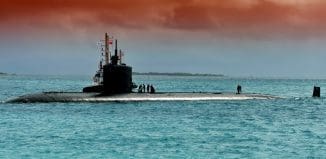What Potential to Expect from Combat UAVs?

This post is also available in:  עברית (Hebrew)
עברית (Hebrew)
The overall picture of drones in combat has evolved and changed in recent years. The US primacy in aerial robotics is no longer a sure thing, in part because of the waning unipolar moment and in part because building a drone capability is cheaper today than it was two decades ago.
What can be learned from the last year regarding Russia’s potential drone power? Samuel Bendett, an adviser at the Center for Naval Analyses and a Fellow in Russia Studies at the American Foreign Policy Council, told c4isrnet.com that as Russia develops its lineup of long-range UCAVs [unmanned combat aerial vehicles], it will challenge American dominance with such technologies.
Going into Syria in 2015, Russia was lacking a key combat element — the ability to hit targets quickly following their identification, one of the key functions of UCAVs around the world today. Moscow’s experience in Syria underscored that point — despite fielding a large number of ISR drones that enabled Russian to be more precise in combat, the majority of targets were hit by manned aviation or manned artillery forces. Hence, the push today to field an entire lineup of strike UAVs for a diverse range of missions.
Public statements by the Russian government and the military establishment also highlight the importance of unmanned systems for the country’s military and its ability to wage war, Bendett adds.
The Ministry of Defence mentioned work on a strike version of Forpost mid-range drone. The Forpost UAV is a license copy of an Israeli “Searcher,” itself a design that is decades old at this point. Capable of distances up to 250 kilometers, it is currently Russia’s longest-ranged drone.
Today, UZGA Defence enterprise is claiming that the “Russified” version of that UAV is full of Russian-made components, so that no further cooperation with Israel would be necessary. According to Bendett, the Russian Ministry also named Orion UAV as another unmanned vehicle to fully see the light of day in 2019. Orion has similar characteristics to Forpost, such as range, at least as advertised at international arms expos [250 kilometers]. It is possible that its range could be extended further — current Orion versions are showcased as ISR models, but there were discussions that it could be offered for export as armed version.
In the large UAV category, the Ohotnik UCAV is the most intriguing and interesting project of its kind in Russia.
Bendett concluded that all these UAVs will give Russia the capability to strike targets at a range anywhere form 250 kilometers and up to several thousand kilometers. This is a flexibility the Russian military has long sought — its Syrian actions depended on manned airborne assets conducting deep-strike against designated targets, which in turn depended on an extensive logistics and infrastructure to support such missions. Having the ability to launch long-range UCAVs from Russian [or Russian-allied] territory would exponentially increase MOD’s ability to conduct missions in the near abroad and possibly around the world.
In future conflicts Russia will join the ranks of high-tech military powers aiming to strike its adversaries with precision. These UCAVs will have a pivotal role in such a construct.



























